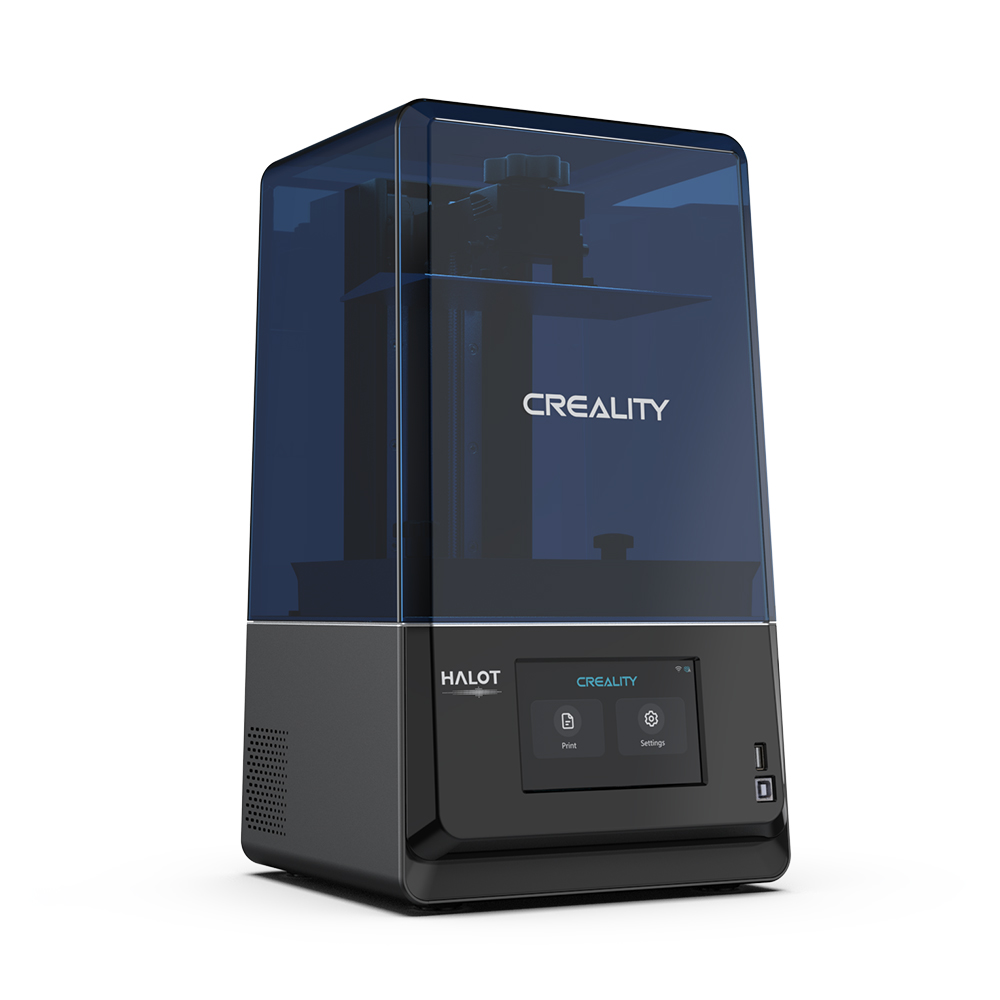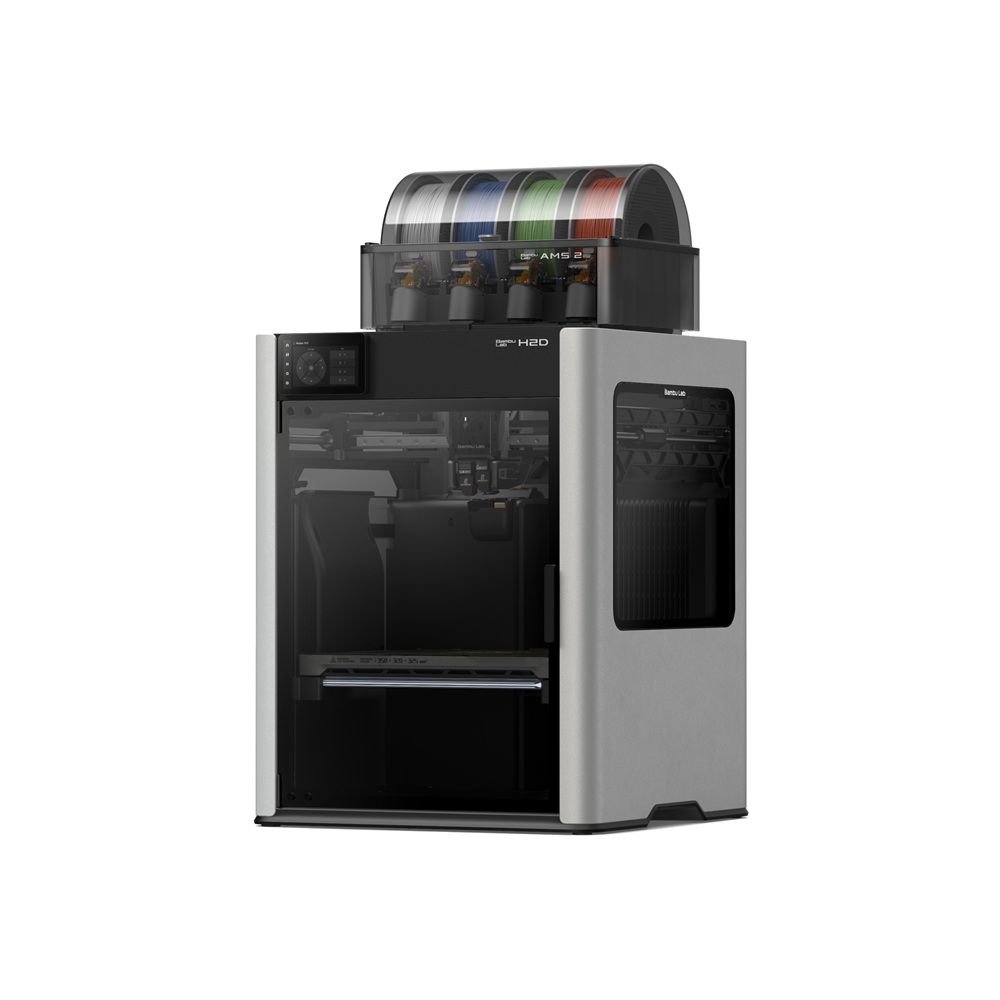Compare Halot One Plus vs H2D
Comparison between the best 3D printers
Choose the best 3D printer at the best price. The cheapest 3D printers are here.
Buy a 3D printer here with 3D Fila.
 |
 |
|
| Model | Halot One Plus[BUY Halot One Plus] |
H2D |
| Printing Material | Resin | Filament |
| Buy Resin for Creality 3D Halot One Plus | Buy Filament forBambu Lab H2D | |
| Estimated price | $399,00 | $1899,00 |
| Manufacturer | Creality 3D | Bambu Lab |
| Release Year | 2022 | 2025 |
| Print Volume [mm] | 102x172x160 | 350x320x325 |
| Printer Size [mm] | 236x245x416 | 492x514x626 |
| Weight [kg] | 6,8 | 42,3 |
| Power Loss Recovery | NO | YES |
| Maximum Resolution [mm] | 0,01 | |
| Processor | ||
| Display | Touchscreen 5'' | |
| Power Supply | ||
| Connectivity | USB / Wi-Fi | Wifi, Bambu bus, Cartão SD |
| Operating systems | Windows, Mac, Linux | |
| Date of registration in the system | 2022-10-11 | 2025-03-31 |
| Release date | 2022 | 2025 |
| Extra features | Crealitys Halot-One Plus printer stands out for its 4K+ resolution that delivers sharp details and consistent surfaces. It features a fast and responsive 5-inch LCD interface, as well as easy-to-use Halot Box software. It offers Wi-Fi connectivity and remote print monitoring, as well as an integrated air filtration unit, a rare feature in this price range. The Halot-One Plus is designed for the prosumer market, combining high quality with advanced features such as Wi-Fi and air filtration. During testing, it stood out for implementing these features at an affordable cost, while maintaining functionality. It features an attractive design with a UV-resistant blue cover and a robust dual rail system for the Z-axis, ensuring smooth and consistent movements. The large LCD and high resolution of the LCD mask (4320 x 2560) are other strong points, allowing for fine details and textures in prints. | Bambu Labs H2D combines high-speed 3D printing with a chamber heated up to 65 °C, dual extrusion with automatic nozzle switching, an AMS for filament drying and exchange, and AI sensors that detect failures. It offers optional laser and digital cutting capabilities, features intelligent calibration through computer vision, vibration control, enhanced fire safety, and real-time camera monitoring. |
| Support for multiple colors and materials (AMS and CFS) | NO | YES |
Notes * |
||
| Cost-benefit | 8 / 10 | 7 / 10 |
| Hardware | 1.4 / 10 | 8 / 10 |
| Tela | . | . |
| Print volume | 3 / 10 | 4 / 10 |
| Performance | 9 / 10 | 5 / 10 |
| [BUY Halot One Plus] |
Conclusion |
| In comparing the Halot One Plus and the Bambu Lab H2D 3D printers, several distinct factors shape their suitability for different users. The Halot One Plus is a budget-friendly option for newcomers and hobbyists in the 3D printing realm. Its affordability, combined with high-resolution resin printing capabilities, makes it an attractive choice for those who prioritize detail and surface quality. The printer's compact size and lightweight design enhance its appeal for home users with limited space. Additionally, features such as Wi-Fi connectivity, an integrated air filtration system, and intuitive software support make it user-friendly for enthusiasts seeking detailed prints without a steep investment. Conversely, the Bambu Lab H2D is a premium machine, reflecting its higher price point. It caters to professionals and serious hobbyists looking for advanced functionalities. With a significantly larger print volume, dual extrusion capabilities, and enhanced features like automated calibration and AI error detection, the H2D offers superior performance. The printer's ability to handle multiple materials and colors further enhances its versatility, making it a powerful tool for complex printing projects. In conclusion, the choice between the Halot One Plus and the Bambu Lab H2D ultimately hinges on the user's needs and budget. The Halot One Plus excels in providing an exceptional cost-benefit ratio for those seeking high-quality resin prints at an accessible price, while the H2D stands out for professionals aiming for advanced features and high-speed filament printing. Each printer offers unique advantages, making them suitable for different segments of the 3D printing community. |

